Content
Once upon a time, a fresh tomato in the middle of winter seemed exotic. Nowadays, store shelves are filled with tomatoes all year round. The variety of colors, sizes, shapes is simply impressive. But there is no difference in taste, mostly it is mediocre. And how can one demand from a tomato that lived in greenhouse conditions to compare in taste with a vegetable that grew in the wild in the summer?
What should be the best tomatoes
The requirements of the farmer for self-planted tomatoes are increased. Here the usual taste is not enough. The tomato should be such that salivation flows from one appearance.
Sugar on a break, with a large amount of dry substances that give a rich taste, the tomato just asks for the table. This is exactly what all the tomatoes of the "sugar" series from the CEDEK company are. Bred at different times, they differ not only in color, but also in maturity. One thing is invariable: the rich, sweet taste of the vegetable. Tomatoes of the sugar series belong to the steak group and have all the advantages of beef tomatoes:
- rather big size;
- a large number of seed chambers;
- rich taste, dominated by sugars;
- good yield;
- disease resistance of tomatoes.
Let's talk in more detail about one of the representatives of sweet tomatoes - brown sugar tomato. This tomato stands out from the whole series not only for its unique color, but also for the content of a large amount of anthocyanins. Such a vegetable has special benefits for the body. We will compose a detailed description and characteristics of a brown sugar tomato and admire its photo.
Tomato Brown sugar produced by the CEDEK company. It was registered in the State Register of Breeding Achievements in 2009, like other tomatoes in this line of varieties: White Sugar and Red Sugar. In 2010, Pink Sugar was added to them, and in 2015 - Raspberry Sugar F1. These tomatoes can be grown in all climatic zones of our country.
Features of the variety:
- it belongs to indeterminants and does not stop its growing season as long as the weather conditions allow, the gardener will have to make sure that all the tomatoes that have set ripen;
- the originators position this variety as mid-ripening, but, according to the reviews of those who planted it, it is rather mid-late, since the first fruits ripen only 4 months after germination;
- it is possible to grow a brown sugar tomato variety in the open field, but it works better in a greenhouse;
- with greenhouse cultivation, tomato brown sugar can grow up to 2 m, and with good care, up to 2.5 m, so a garter is required. This tomato variety shows the best results when dribbling in 2 stalks, so pinching for it is a mandatory procedure.
- the tomato brush is simple, up to 5 fruits are tied in it, the first inflorescence is laid under 8 or 9 leaves;
- the fruits of this variety can have both a cuboid and a flat-round shape, the color of the tomatoes is very beautiful - reddish-brown, the weight of each fruit reaches 150 g in the first cluster, on the others they are slightly less;
- the purpose of tomatoes is universal: they are good in salads, for making sauces, juices and any preparations for the winter;
- fruits have many seed chambers and, as a result, more tasty pulp and few seeds.
To give a complete picture of the plant and finish the description of the brown sugar tomato variety, it must be said that it is cold-resistant, ripens almost to frost, giving a good yield - from 6 to 8 kg per sq. m.
Agrotechnics of tomato
Tomato seeds Brown sugar can be bought in almost any store, but collected from plants grown in their own garden, they will already be adapted to certain growing conditions, the main of which is the composition and structure of the soil. Grown from their own seeds, the plants will develop better and give a consistently high yield, they resist diseases well, finally, the germination rate of such seeds, in contrast to store seeds, is much higher.
Tomato is an optionally pollinated plant, that is, only flowers growing nearby are pollinated with pollen. But in hot weather, the situation changes, and neighboring plants can also get dusty. Often, gardeners grow different varieties of tomatoes in a close neighborhood, so as not to collect seeds from a tomato, which is also pollinated by another variety, that is, a hybrid, you need to adhere to the following rules:
- choose a strong tomato plant Brown sugar that fully meets the varietal characteristics in advance and take good care of it;
- choose a fruit from the lower brush for seeds that most closely matches the varietal description; the flowers on the remaining flower brushes have a high probability of cross-pollination, since they bloom at a time when bees and bumblebees are most active, and no one will prevent them from flying into the greenhouse;
- the fruit is plucked in full ripeness or slightly unripe, but by no means overripe - the strongest seeds in it can germinate, and as a result, weak offspring will turn out.
The isolated and dried seeds must be sown on seedlings. In a tomato of the Sugar brown variety, the seedlings should be 60 days old at the time of planting. For planting in greenhouses under polycarbonate, seeds should be sown at the end of February, in film greenhouses - at the beginning of March, and for open ground - closer to its end.
Rules for getting good seedlings
For tall varieties of tomatoes, including brown sugar, it is very important that the seedlings do not stretch out, otherwise it will affect the yield. To prevent this from happening, you must strictly adhere to the following rules:
- complete processing and germination of seeds - dressing, soaking in a solution of a biostimulator;
- sow seeds in fertile loose soil, similar in composition to the soil in your garden;
- reduce the temperature for emerging seedlings for several days, it should not be higher than 16 degrees during the day;
- provide tomatoes with the maximum amount of light for the entire growing period;
- a week after germination, raise the temperature and maintain it within 23 degrees during the day and a little cooler at night;
- do not water too often, but also do not let the soil dry out completely;
- open the sprouts when they are just about to release the third leaf;
- do not give brown sugar tomato plants to starve and provide 2 or 3 additional fertilizing using a weak solution of complete mineral fertilizer;
- keep warm not only the "head", but also the "legs" of the tomatoes; for this, insulate the windowsill so that the soil temperature is not lower than room temperature;
- keep some distance between the tomato pots. Competing for light, the seedlings will inevitably stretch out.
- acclimatize the plants to the open air gradually so that they are acclimatized by the time of disembarkation.
Leaving after disembarkation
The soil in the beds and in the greenhouse is prepared in the fall. Organic matter is introduced, but not fresh manure, from which tomatoes fatten and grow tops instead of fruits. Phosphorus fertilizers are also supposed to be applied in the fall, poorly soluble, they will be converted into a form convenient for plants with melt water. But nitrogen and potash fertilizers are applied during spring loosening of the soil.
Acidic soils need to be limed. This is done in the fall, but not simultaneously with the introduction of organic matter, otherwise it will lose a lot of nitrogen.
Planting scheme for tomato plants Brown sugar - from 40 to 50 cm between plants and about 50 cm between rows. The soil under the tomatoes planted in the greenhouse must be immediately mulched to ensure a comfortable existence for them.
Further care implies the following:
- moderate watering before pouring the fruits - once a week, but with complete moistening of the entire root layer; when the fruits begin to pour, the frequency of watering increases up to 2 times a week. In order for the dry matter content in the fruits of tomato brown sugar to remain high, it is impossible to be zealous with watering, otherwise they will become watery and greatly lose their taste.
- top dressing with full complex fertilizer intended for tomatoes; their frequency depends on the fertility of the soil in the greenhouse, usually the plants are fed once every 10-14 days;
- the formation of plants in 2 stems; for this, all stepchildren are removed, except for one located under the first flower brush - a second shoot is formed from it;
- preventive treatments for late blight.
You can watch the video about the advantages of the brown sugar tomato variety:
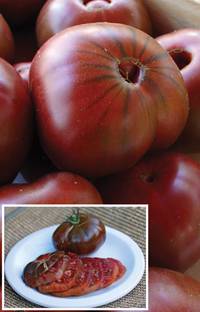


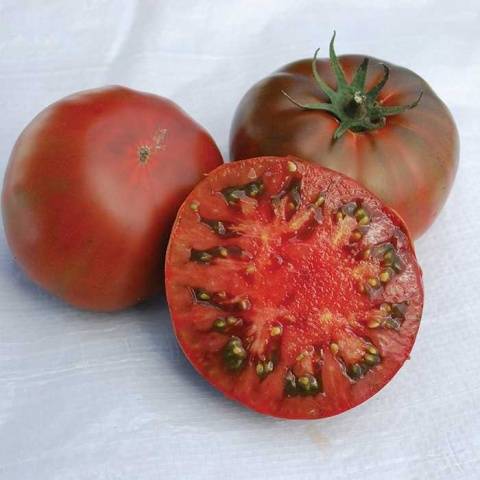

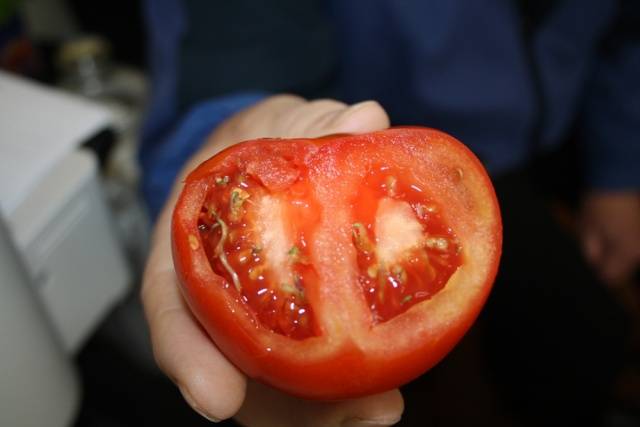
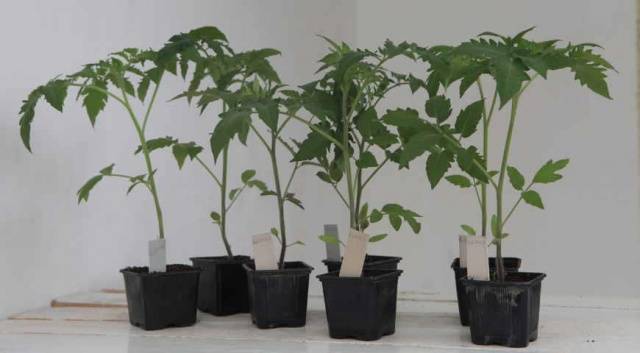
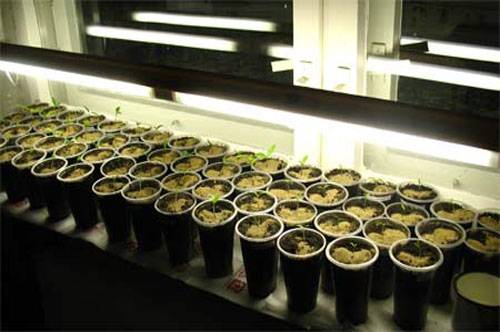
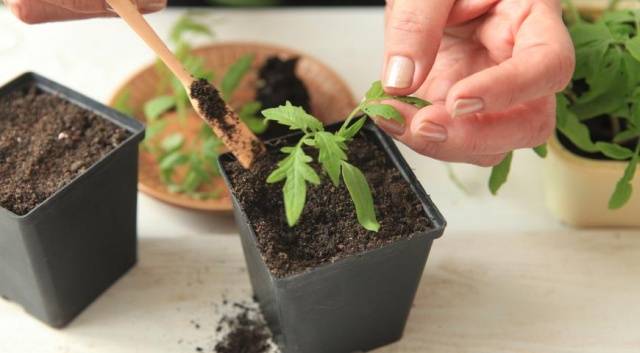

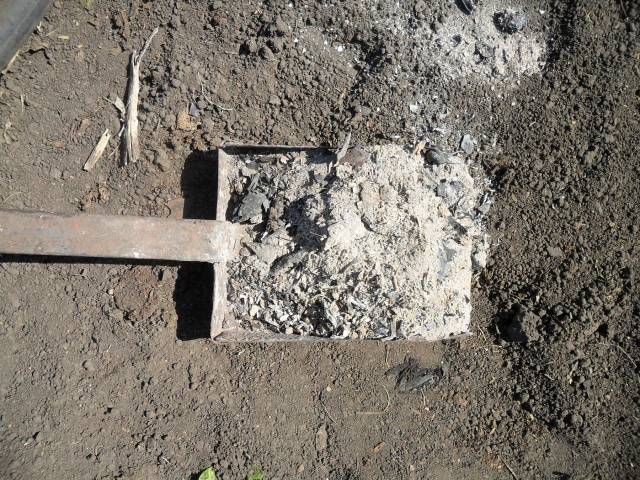









I planted Brown Sugar in 2019, I liked it very much, sweet, grew on the street, there are many fruits, one of our favorites !!!